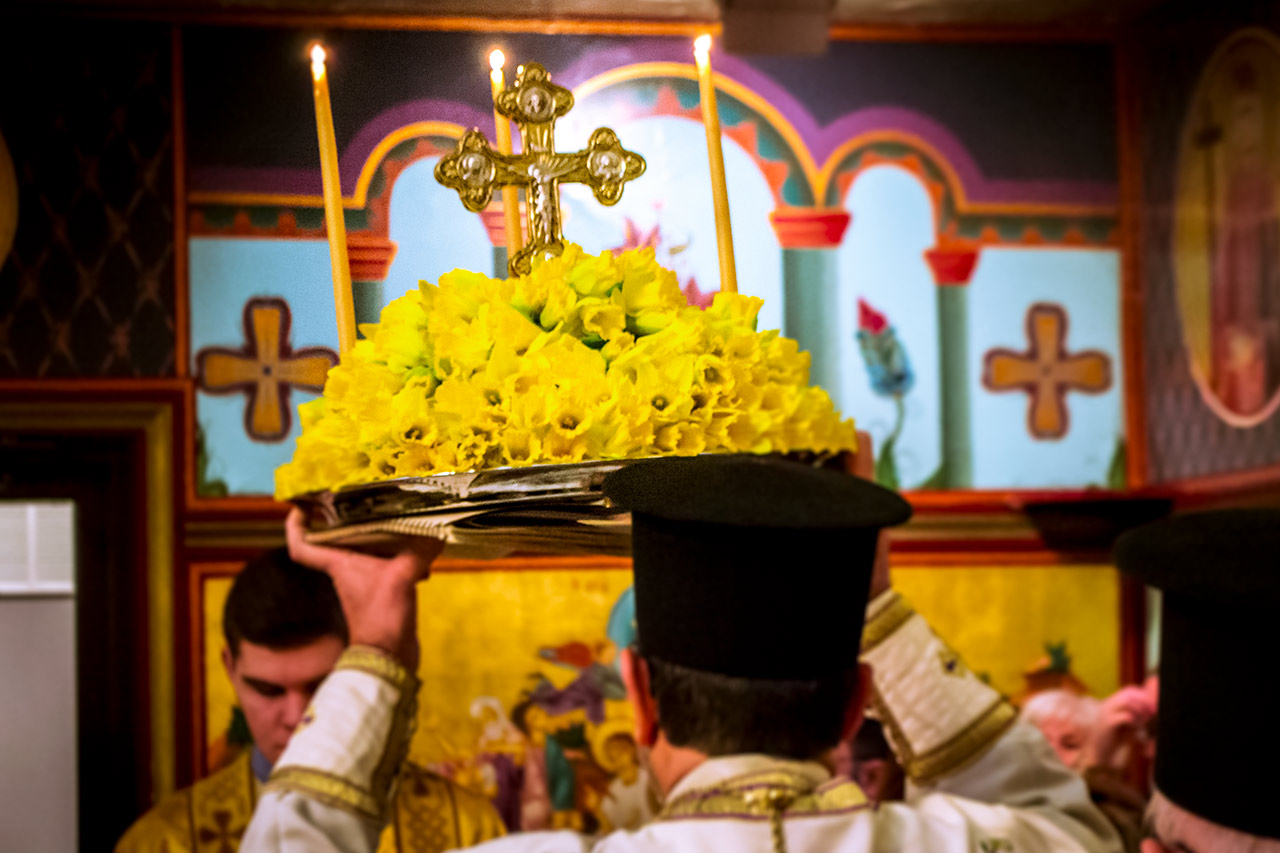Introduction
On the Third Sunday of Great and Holy Lent, the Orthodox Church commemorates the Precious and Life-Giving Cross of our Lord and Savior Jesus Christ. Services include a special veneration of the Cross, which prepares the faithful for the commemoration of the Crucifixion during Holy Week.
Historical Background
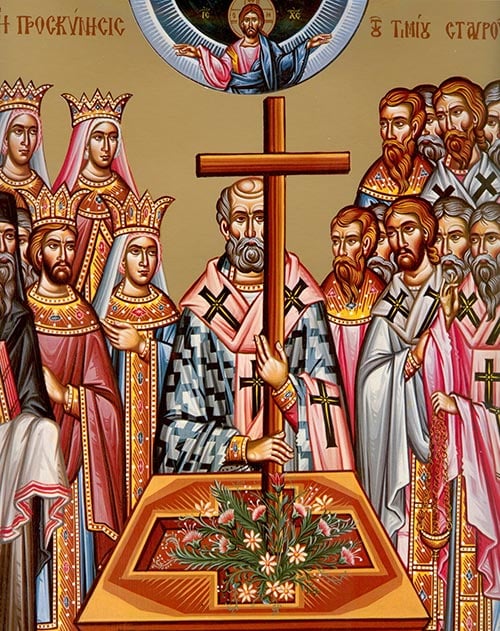
As we have “crucified the flesh with its passions and desires” (Galatians 5:24), and will have mortified ourselves during these forty days of the Fast, the precious and life-giving Cross is now placed before us to refresh our souls and encourage us who may be filled with a sense of bitterness, resentment, and depression. The Cross reminds us of the Passion of our Lord, and by presenting to us His example, it encourages us to follow Him in struggle and sacrifice, being refreshed, assured, and comforted. In other words, we must experience what the Lord experienced during His Passion - being humiliated in a shameful manner. The Cross teaches us that through pain and suffering we shall see the fulfillment of our hopes: the heavenly inheritance and eternal glory.
As they who walk on a long and hard way and are bowed down by fatigue find great relief and strengthening under the cool shade of a leafy tree, so do we find comfort, refreshment, and rejuvenation under the Life-giving Cross, which our Fathers “planted” on this Sunday. Thus, we are fortified and enabled to continue our Lenten journey with a light step, rested and encouraged.
Or, as before the arrival of the king, his royal standards, trophies, and emblems of victory come in procession and then the king himself appears in a triumphant parade, jubilant and rejoicing in his victory and filling those under him with joy, so does the Feast of the Cross precede the coming of our King, Jesus Christ. It warns us that He is about to proclaim His victory over death and appear to us in the glory of the Resurrection. His Life-Giving Cross is His royal scepter, and by venerating it we are filled with joy, rendering Him glory. Therefore, we become ready to welcome our King, who shall manifestly triumph over the powers of darkness.
The present feast has been placed in the middle of Great Lent for another reason. The Fast can be likened to the spring of Marah whose waters the children of Israel encountered in the wilderness. This water was undrinkable due to its bitterness but became sweet when the Holy Prophet Moses dipped the wood into its depth. Likewise, the wood of the Cross sweetens the days of the Fast, which are bitter and often grievous because of our tears. Yet Christ comforts us during our course through the desert of the Fast, guiding and leading us by His hand to the spiritual Jerusalem on high by the power of His Resurrection.
Moreover, as the Holy Cross is called the Tree of Life, it is placed in the middle of the Fast, as the ancient tree of life was placed in the middle of the garden of Eden. By this, our Holy Fathers wished to remind us of Adam’s gluttony as well as the fact that through this Tree has condemnation been abolished. Therefore, if we bind ourselves to the Holy Cross, we shall never encounter death but shall inherit life eternal
Icon Of The Commemoration
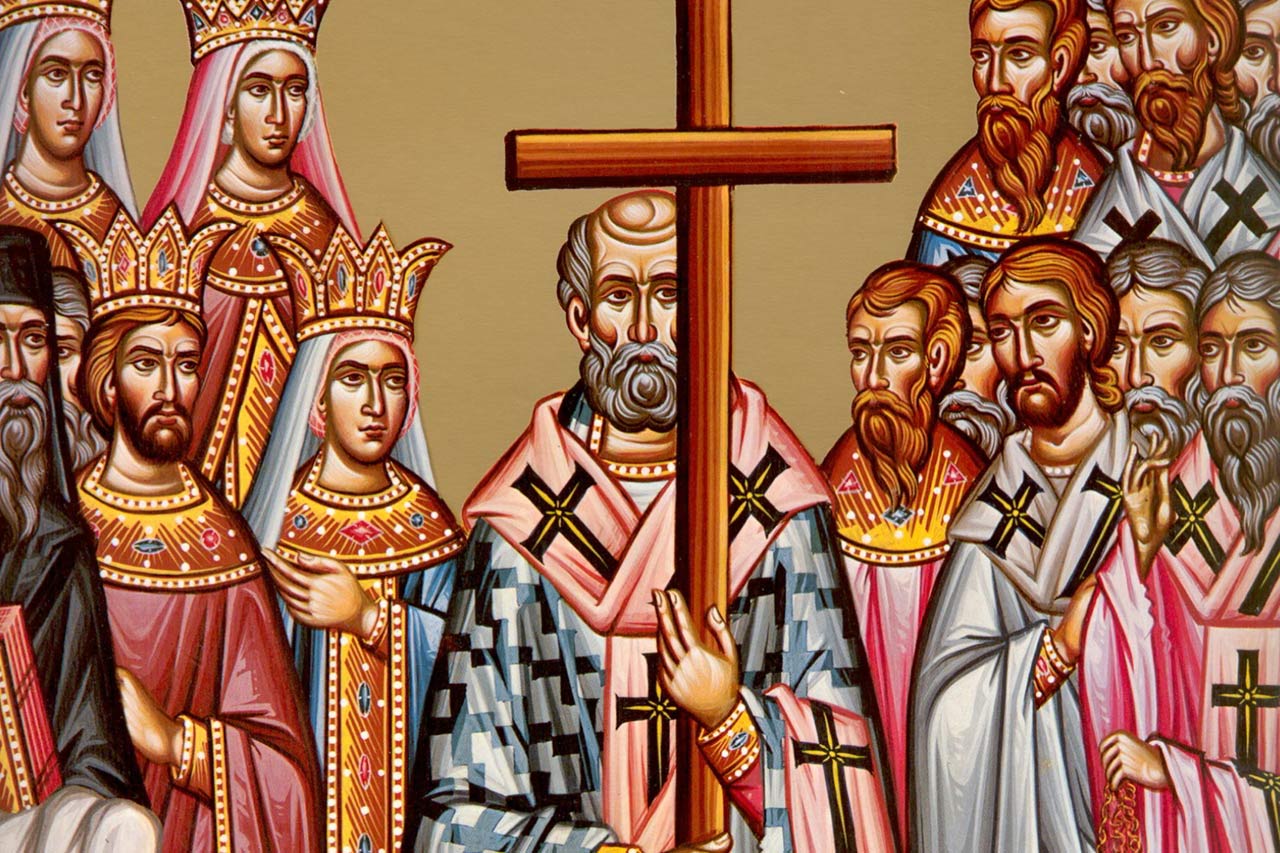
The most common icon associated with the Veneration of the Cross is the same icon used on the Feast of the Universal Exaltation of the Precious and Life-Giving Cross, September 14. In the icon, Patriarch Macarius is standing in the pulpit elevating the Cross for all to see and venerate. On each side of the Patriarch are deacons holding candles. The elevated Cross is surrounded and venerated by many clergy and lay people, including Saint Helen, the mother of Emperor Constantine.
In the background of the icon is a domed structure that represents the Church of the Resurrection in Jerusalem. This church was one of the churches constructed and dedicated by Emperor Constantine on the holy sites of Jerusalem.
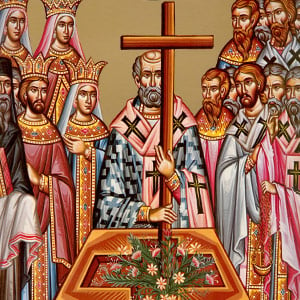
As in the service of veneration, the icon shows the priest venerating the Cross as the people chant the hymn “We venerate Your Cross, O Christ, and Your holy Resurrection we glorify,” which is inscribed on the table holding he Cross.
Orthodox Christian Commemoration of the Sunday of the Holy Cross
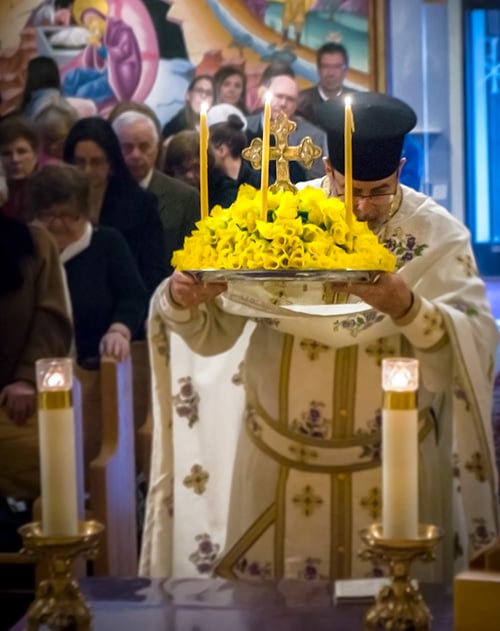
Scripture readings for the Sunday of Orthodoxy are: At the Orthros (Matins): The prescribed weekly Gospel reading. At the Divine Liturgy: Hebrews 4:14-16; 5:1-6; Mark 8:34-38; 9:1.
At the conclusion of the Matins (the traditional practice in association with a vigil) or of the Divine Liturgy, a special service is held. The Cross is placed on a tray surrounded by basil or daffodils and is taken in solemn procession through the church to the chanting of the Thrice Holy Hymn. The tray is placed on a table before the people, and the hymn of the Feast of the Cross is chanted. As the priest venerates the Cross, the priest then the people chant, “We venerate Your Cross, O Christ, and Your holy Resurrection we glorify.” At the conclusion of the service, the people come and venerate the cross and receive the flowers or basil from the priest.
Hymns for the Sunday of the Veneration of the Holy Cross
Apolytikion (First Tone)
O Lord, save Your people and bless Your inheritance; grant victory to the faithful over their adversaries. And protect Your commonwealth, by the power of Your Cross.
Festal Kontakion (Grave Tone)
No longer does the flaming sword guard the gate of Eden, for a marvelous quenching is come upon it, even the Tree of the Cross. The sting has been taken from death, and the victory from Hades. And, You, my Savior, has appeared unto those in Hades saying: Enter again into Paradise.
Seasonal Kontakion (Plagal of the Fourth Tone) - Sung during Divine Liturgy
O Champion General, we your faithful inscribe to you the prize of victory as gratitude for being rescued from calamity, O Theotokos. But since you have invincible power, free us from all kinds of perils so that we may cry out to you: Rejoice, O Bride unwedded. (Translated by Father George Papadeas)
